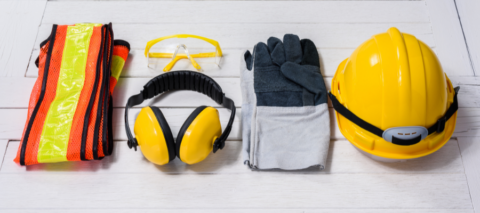When we think about safety hazards on the job, our minds usually go to the scariest or biggest potential threats. But did you know that most injuries on a construction worksite are rarely caused by these bigger, daunting tasks? Actually, injuries are most often caused by the smaller tasks that we perform on a daily basis. We call these stupid mistakes.
While it may sound harsh, the term “stupid mistake” isn’t referring to a mistake made by someone with little intelligence. We all make them, and in most cases, a stupid mistake refers to some error or slip-up that we made on the worksite when we should have known better or could have steered clear of had we been paying closer attention. Usually the tasks that cause these mistakes are quite simple and usually ones that we have done over and over again. That’s why we call them “stupid mistakes”.
The two main factors that cause workers to make stupid mistakes on the job are frequency and complacency. Let’s face it, once we’ve done the same task over and over again, we begin to become over-confident and complacent. We’ve done it so many times, that we feel like we could do it in our sleep. Then, we stop paying attention and we fail to even think about the chances of getting hurt. Before we know it, we make a stupid mistake that could turn out to be something more than a bandaid could fix.
While you would think most injuries on a worksite are caused by operating dangerous equipment, a lot of workers are getting hurt while simply walking across the site by perhaps stepping on a rock or tripping. In fact, the largest category of injury in the construction industry are sprains, strains, and tears.
The biggest single cause of contraction-related fatalities are caused by falls. And sometimes these falls aren’t from great heights. Workers who are 80 or more feet up are more cautious and conscious of falling because of the ominous view from above. But statistics show that 50% of workplace deaths due to falls occur from heights of 25 feet or less. Workers become so used to working at elevations of “just” 10 or 20 feet that they do no pay attention or think about how risky the task really is.
Other stupid mistakes occur from forgetting to wear PPE, so make sure you put on your hard hats, gloves, and eyewear before beginning a job.
If you’re a supervisor, it is important to help your employees understand that low-risk activities are just as dangerous as bigger ones and can cause serious injuries. Have small, frequent discussions about all potential safety hazards on the site— small and large. Help them to understand and be aware that it is easy to lose focus on simple, repeated tasks. When they are mindful of this fact, they will begin to pay attention to whether they are focusing or not, resulting in less injuries. Make sure you stress to them how crucial it is to wear PPE at all times and to follow guidelines closely. And remember that no matter how tight the deadline or important the job, safety always comes first.
At OHC we can clean up, fix, and heal injuries on the job— that’s what we’re here for. But we believe that prevention is always better than the cure. Safety is a full-time job, and if done right, it will save you money and will allow you to be a more productive company. Let’s make a safer workplace and avoid stupid mistakes together. And if an accident should ever occur, you know Occupational Healthcare Center (OHC), Dr. Taylor, Dr. McMillian, and our entire professional staff are here when you need us.
MOBILE CLINIC
DIRECT: 251.436.8039
CELL: 251.751.9282
OFFICE: 251.434.6770
EMAIL: ddaniel@occupationalhc.com
PASCAGOULA CLINIC
OFFICE: (228) 762-4642 or (228) 762-4OHC
EMAIL: ddaniel@occupationalhc.com
Resources/////////////////////////////////////////////////////////////////////////////////
http://ohsonline.com/Articles/2015/01/01/Ten-Feet-Tall-and-Falling.aspx?admgarea=news&Page=1






